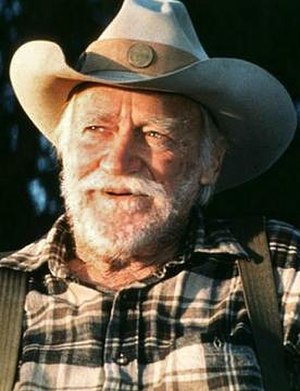
My life in the real desert thus far has consisted of much more than personal injury and the shock of having no television. It includes the reading of old western favorites and movies that remain in the collection. Split into blu-ray, NTSC, Region 0 and Pal, the DVDs are spread out between RV and 5th wheel. In terms of stimulation, the tales by Louis L’Amour are hard to beat. Each story a sort of male romance novel built around rugged and hard men who must either fight, solve a mystery or puzzle, or defeat a villain who has designs on the girl of the protagonist’s dreams.
It took me awhile to figure out that these adventure stories of the old west were, in fact, the male answer to Harlequin Romance. These gunfighters, gamblers, cowboys, miners, lawmen, soldiers and so on are all just men searching for something. In the books it is either home, land, destiny and/or a woman. Each hero is an individual who yearns to put down roots, eventually for some and sooner for others, and they are tired of being a lone traveller.
The best thing about the heroes in L’Amour’s books is that the partner they seek is not a helpless and timid female. These men want strong women who will be an equal partner in the relationship. In that sense the author, through his protagonists, was an early feminist supporter way before it became fashionable. Considering L’Amour wrote during the 1950s and 60s he was ahead of his time.
While hanging the title of feminist around the neck of this self-educated wandering man may feel awkward, it is worth remembering that L’Amour himself was a strong character. A man who struck out to explore the world and all it had to teach him in his early teens. There is little doubt that his own strength moved him to admire the trait in anyone else who possessed it and this is reflected in his writing.
Each of the many books written by the late author are “page-turners,” and impossible to put down until the tale is finished. Many of his stories have been made into films or, in the case of the Sackett sagas, made for TV programs starring Sam Elliott and Tom Selleck as two of the many brothers in the large clan.
Perhaps it is the location I’m in that makes the reading of these books seem a necessity. While L’Amour’s writing about the West took in all of the frontier, many of his characters crossed not only the plains but the deserts of the southwest. Some died from attacks by indigenous tribes of the region and others for lack of water in a dry and barren land. Still more were victims of a slow draw or died as the result of poor judgement.
The area where I live, like others that have been home in the US, feels like a land “out of time” and if one suddenly came across a calvary patrol, dusty, tired and sweat stained from their efforts it would not be surprising. The people who populate the country now are just as fiercely independent as the settlers, nesters, ranchers, cowboys and pioneers that L’Amour writes of in his stories. All that is missing, when one goes to town, is the sound of spurs jangling on a boarded sidewalk.

Rather interestingly, out of all the films in my collection, Westerns have not been viewed very often. Possibly because most of the ones on hand were filmed in either Mexico (Durango) or some other “standard” setting favored by the studios, like Death Valley et al. Although that may not be the case at all.
It could well be that this part of the “old West” is new to me. From Hi Jolly’s grave to the infamous Yuma state (territorial) prison miles down the road, all the local history, from Tyson Wells stage stop to the army presence here in this part of the desert, is waiting patiently for me to discover it. It is all, except for Hi Jolly, new to me.
Once the dust has settled from my move, a lot of research into the area will be done. I have already read about the camel experiment and a short book about Arizona Rangers has provided a wealth of information about the times and, rather interestingly, about news coverage of events back then.
The small stage stop museum is only open part time and once my injuries clear up completely, I will be seeking information on the old way of living in the real desert. A lifestyle that is only remembered, it seems, in western books and movies.
14 April 2015







You must be logged in to post a comment.